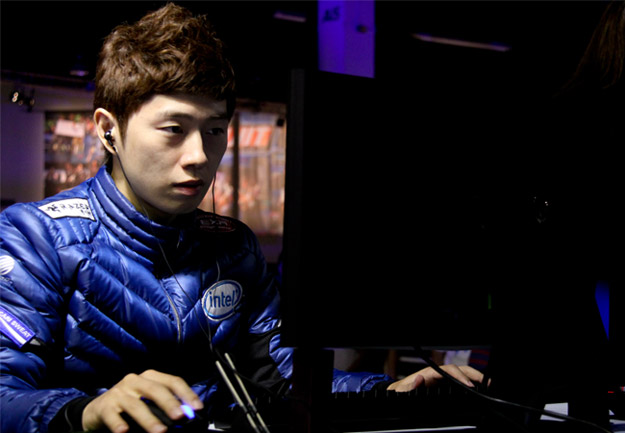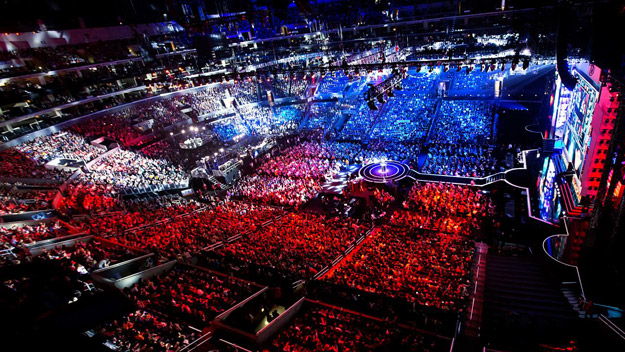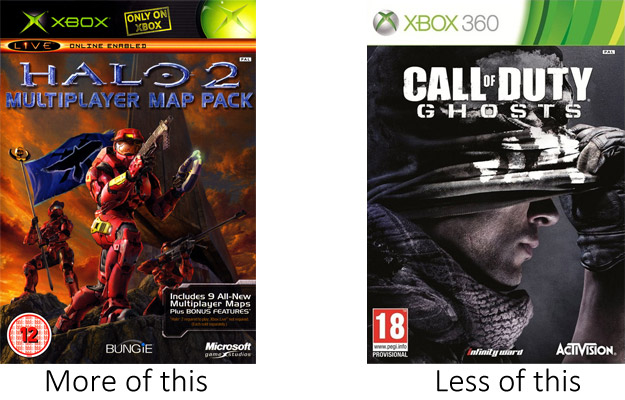10 years ago annual game releases were unheard of. When you bought a game you expected to play it for the next 3 years or more before the next sequel was released. Sure, sometimes the games would get an expansion or two, for example, Command & Conquer and Diablo, but getting into a new game was like entering a long term relationship, not just a summer fling.
With game developers hastening the development process and publishers outsourcing their IP’s to multiple developers in order to get games out more frequently we’re starting to see a saturation of content, a saturation of games and worst of all, in my opinion, diminishing quality in the game series we’ve all come to love. First person shooters seem to be the worst offenders with Call of Duty being the obvious elephant in the room, but Battlefield and now Halo are on the horizon, racing to catch up.
With the hype around Halo 5 Microsoft have hinted they’d like to release a new Halo game each year.
“There’s no explicit strategy that says we’re to ship a Halo game every year. I will say I think one Halo game every three years — which was kind of our old cadence – is probably not frequent enough.” – Source: IGN
Imagine if you would, if basketball or soccer was replaced every year or 2 by another sport or if the rules changed drastically each year. Could you imagine how the players would feel? How about the teams, the sponsors, the spectators?
Anyone that followed Halo back in the day will remember Final Boss. Final Boss were the most dominant Halo team for years. Fatal1ty was the biggest name in eSports in North America for years playing Quake 3 and Painkiller and countless StarCraft pros played the game for years, some of them even continuing over to StarCraft 2 after playing for more than decade.

Boxer is one of the biggest names in StarCraft with a career spanning over 10 years. Photo Credits
These days the games don’t even stick around long enough for teams to get a following and build a proper audience. Many people will tell me: “Well, the players either adapt or die”, but the truth is the games longevity isn’t long enough for the players to truly master the games they’re playing.
I believe it was 2 years after the release of Halo 2 that players started to master the ‘double shot’ which allowed a player to shoot Battle Rifle bursts slightly faster with a button combination. If Halo 3 came out just a year after Halo 2, chances are the ‘double shot’, would never have been discovered and used in competitive play.
The best eSports titles are the ones that are able to sustain a community. Spectators want to learn the game the same way the pro players know it. They want to follow their favourite teams and players as they rise through the ranks and win the championships.
Lets take a quick look at some successful eSport titles:
StarCraft: March 31, 1998
StarCraft – Brood War: 30 November 1998
StarCraft 2 – Wings of Liberty: July 27, 2010
StarCraft 2 – Heart of the Swarm: March 12, 2013
League of Legends: October 27, 2009
Halo: November 15, 2001
Halo 2: November 9, 2004
Halo 3: September 25, 2007
Notice a trend here? The sequel to the original StarCraft didn’t come out for more than 10 years! In this time StarCraft became so popular in South Korea that tournaments were televised and players such as Boxer became celebrities. This was possible because the players had years to build a following and spectators had years to learn the game, the maps, the players, etc.
League of Legends is the worlds most popular game with an incredibly popular eSports following because its had almost 5 years to build its audience up to now. The Halo series was strong in MLG with sequels being released every 3 years.

The League of Legends Championship Series. This is what is possible when a game community has the time to grow.
Counter Strike 1.6 and Quake 3 are other examples of games that had a huge eSports following for years. Even to this day there are still tournaments held for Counter Strike 1.6 and the Quake 3 community lives on through the free browser based Quake Live.
Obviously, Call of Duty is an exception here. Yearly releases haven’t hurt the sales and popularity of Call of Duty, however I’m certain that franchise is a bubble just waiting to burst much like Activision beat the Guitar Hero series to death by flooding the market with similar games so frequently.
The CoD sequels play extremely similar to each other with the main differences being the maps and the guns available to the players, but the actual shooting mechanics don’t change too much and the game types are the same so it’s easy to hop from one game to the next. Unfortunately, while CoD does play a big role in eSports the players will never master each map and allow time for the meta game to evolve before the next CoD is released.
As hardcore gamers we don’t want to be flooded with sequels every year. I would much rather game developers take their time to perfect and balance their games. Even single player games such as Assassins Creed have suffered from frequent releases but I’ll leave that rant for another day.
I don’t think I’m alone in saying that we don’t want a sequel every year, we would much prefer developer support with new maps and game modes to enhance the experience of the game we’re already playing which we’ll happily play for years. Assuming Halo 5 is an excellent game, I’d much prefer to play it for 3 years with new maps released each year over Halo 6 released only a year or 2 later without giving me enough time to thoroughly enjoy Halo 5.

Rather than releasing a sequel every year why not take the time to create an amazing sequel and release map packs each year instead? The Halo 2 DLC offered Halo 2 fans exactly what they wanted. More Halo 2.
Some games have had amazing developer support post-release. Blizzard kept on patching the original StarCraft all the way up to StarCraft 2’s release. Epic is another great example, making modding tools available to the community and releasing extra maps for Unreal Tournament 2004. UT2K4 shipped with over 100 maps which is simply unheard of in modern games! This is what I’d like to see more of: Provide us with a game that lasts.
So developers, if you’re out there reading this: Please give us more time to love the games you create and give yourselves time to craft a worthy sequel. Allow us to master your games and evolve the meta game. Offer us a reason to spend money on your game over the competition.
With free to play games like LoL offering so many years of enjoyment what incentive do I have to spend $100AUD on a game, then another $100AUD on the sequel just a year or 2 later?
